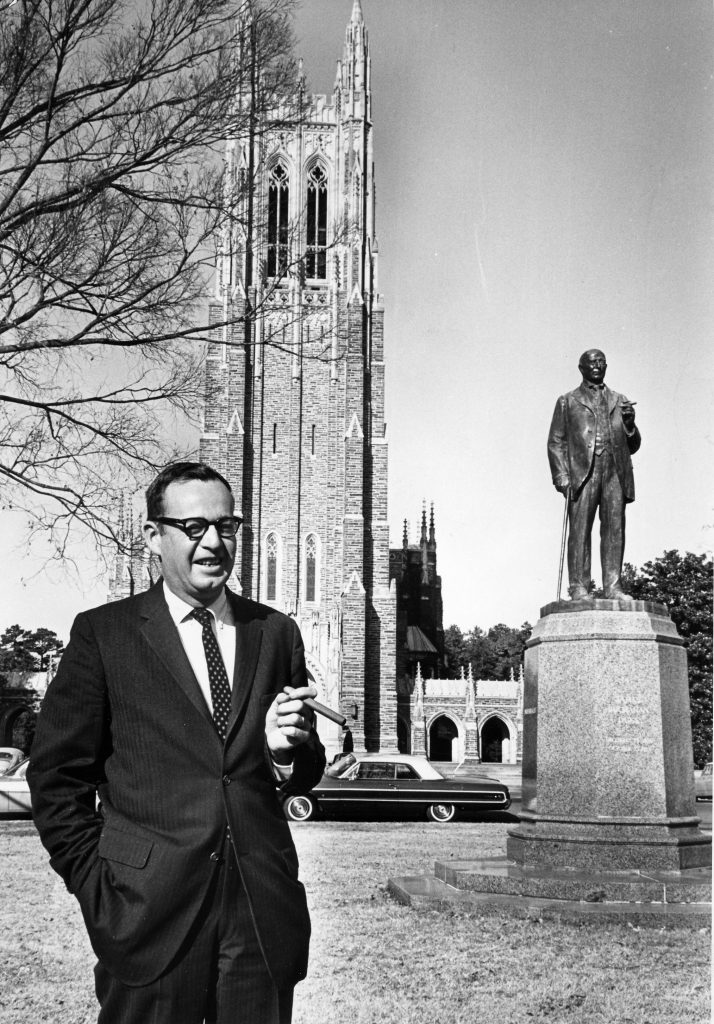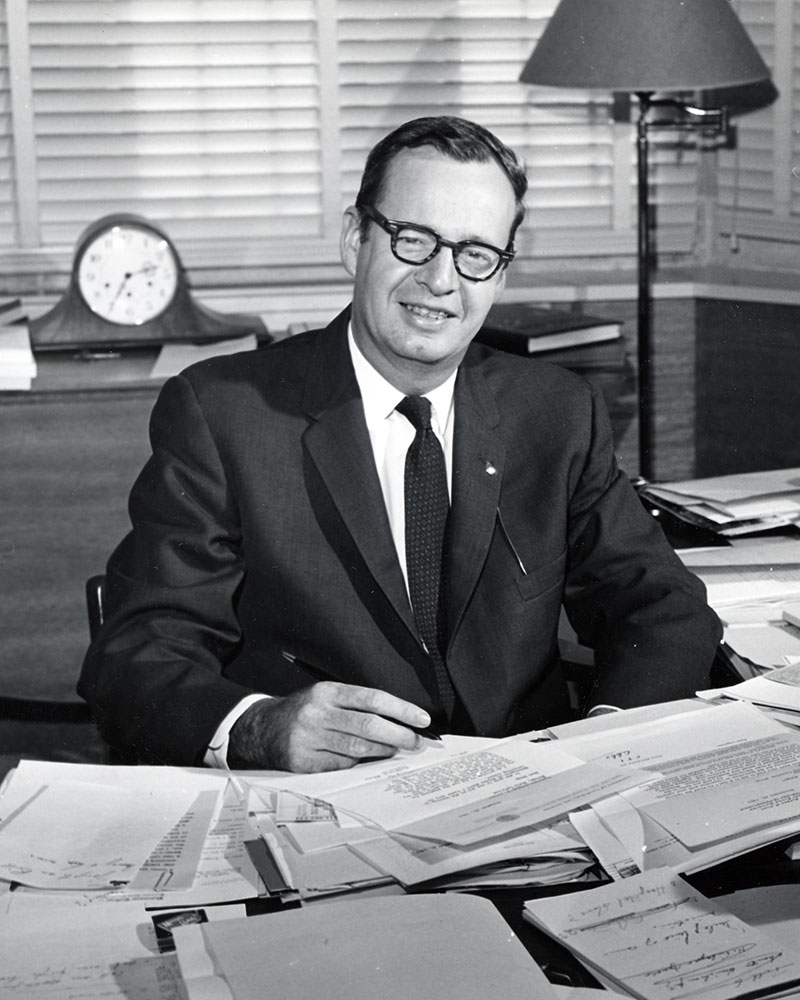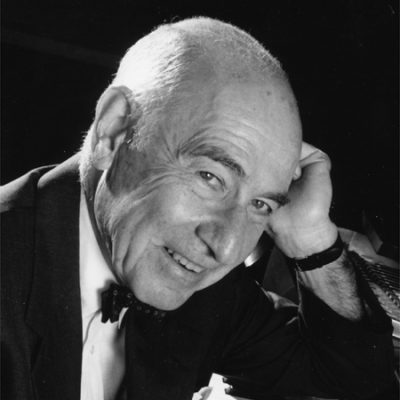Douglas M. Knight, Duke’s fifth president (1963 – 1969), oversaw an era of significant acceleration, as the university’s coffers, academic programs and physical plant all expanded.
Yet Knight served at a turbulent time in the university’s history, resigning in 1969 following student protests and a takeover of the Allen Building, the university’s main administrative building. That takeover came as students demanded, among other things, a Black cultural center and a curriculum in African American studies.
Still, his six-year tenure was marked by growth in many areas. The university brought in $195 million in grants and gifts, three times more than the entire six-year period that proceeded it. Joint M.D.-J.D. and M.D.-Ph.D degrees were launched, as were interdisciplinary programs in forestry management and biomedical engineering. Perkins Library received a major new wing that increased capacity fivefold, and Knight oversaw the creation of Central Campus as a transitional residential area linking what were, at the time, the men’s and women’s campuses.

“Doug Knight was a consummate gentleman and scholar,” Duke President Richard H. Brodhead said upon Knight’s death in 2005. “Duke emerged from the tumultuous years during which he served as president as a stronger institution, and the foundation Doug Knight laid enabled the university to rise in the ranks of the nation’s leading universities today.”
Upon leaving Duke, Knight became vice president of educational development for RCA Corp. and in 1971 president of RCA Iran. In 1976, he became president of Questar Corp., a manufacturer of high-precision lenses for astronomical, industrial and medical applications.
He authored 10 books, writing about his Duke experience in his 1989 book “Street of Dreams” and in a 2003 memoir “The Dancer and the Dance.”



